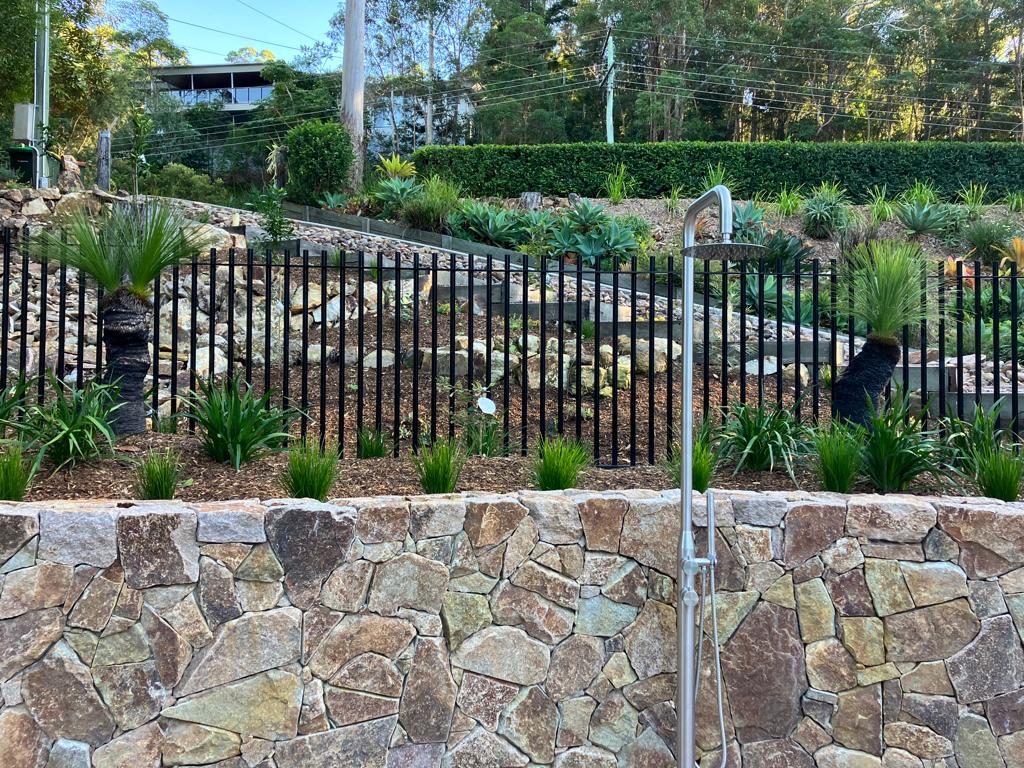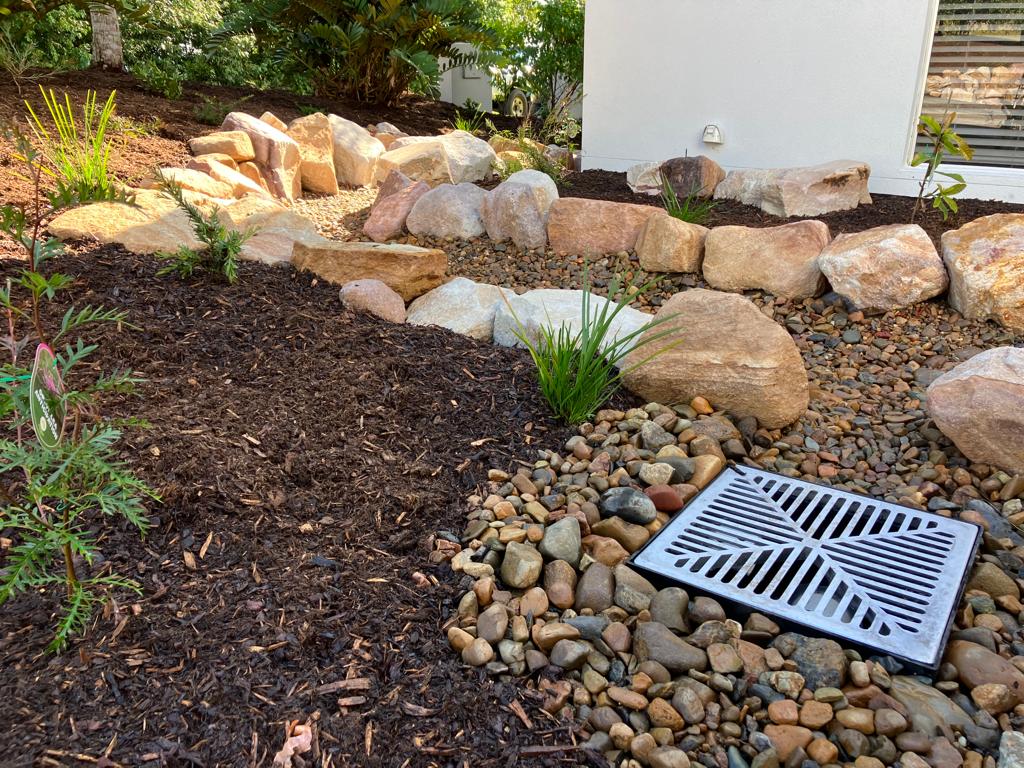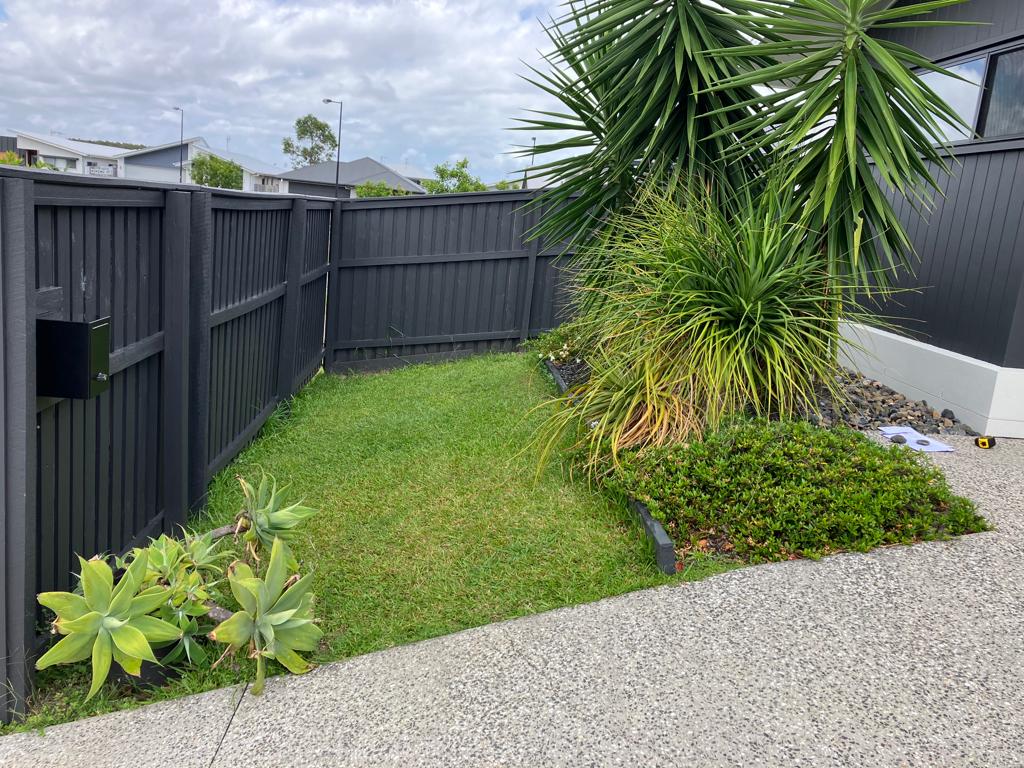Sunshine Coast Native Landscape Design: A Simple Guide
What is Native Landscape Design?
Native landscape design is all about using plants that naturally grow in your area. These plants thrive in the local climate and soil. Because they are used to the environment, they need less water and care. This makes them great for both the environment and your garden. Plus, native plants support local wildlife like birds, butterflies, and bees.

Why Choose Native Plants for Your Garden?
There are many benefits to using native plants. First, they are easier to take care of because they grow naturally in your area. They don’t need as much water, fertiliser, or pesticides. This saves you time and money. Native plants also help preserve the local ecosystem. They provide food and shelter for native animals and insects. And because they fit the local landscape, they help keep the natural beauty of the Sunshine Coast.
Types of Gardening and Landscape
Design in Sunshine Coast
Coastal Gardens
Sunshine Coast is close to the beach, so coastal gardens are common here. Coastal gardens are designed to handle the salty air and sandy soil. In these gardens, you’ll find tough, salt-tolerant plants like coastal banksia, pigface, and spinifex. These gardens are low-maintenance and often have a relaxed, beachy feel.
Rainforest Gardens
The Sunshine Coast has areas of lush rainforest. You can bring some of this beauty into your garden with a rainforest design. This type of garden uses plants like ferns, palms, and native trees. These plants prefer shaded areas and moist soil. Rainforest gardens are great for creating a peaceful and cool space in your yard.
Bush Gardens
Bush gardens are a celebration of the native Australian landscape. They often have plants like wattles, grevilleas, and kangaroo paws. These gardens are designed to look natural and wild. You can create winding paths and use rocks and logs to enhance the natural look. A bush garden also attracts many birds and wildlife.
Xeriscape Gardens
Xeriscape gardens are perfect for areas with little water. They use drought-tolerant plants like succulents, grasses, and certain native shrubs. These gardens are very low-maintenance and can save a lot of water. Xeriscaping is ideal for people who want a beautiful garden without having to water it often.
Cottage Gardens
A cottage garden is full of colorful flowers and plants. It has a charming, relaxed style. Native plants like bottlebrush, daisies, and kangaroo paw can add color and texture. This type of garden is great for smaller spaces and gives a homely feel. Plus, cottage gardens often attract bees and butterflies, which are good for pollination.
Native Plants to Consider for Sunshine Coast Gardens
- Banksia: These are hardy plants with unique, cone-shaped flowers. They grow well in sandy soil.
- Grevillea: This plant has spiky flowers that come in many colors. It’s great for attracting birds.
- Kangaroo Paw: With its long, colorful flowers, the kangaroo paw is a favorite in native gardens.
- Bottlebrush: Known for its bright red, bottle-shaped flowers, this plant is very popular in Australia.
- Lilly Pilly: This plant has glossy leaves and small berries. It can be used as a hedge or feature plant.

How to Design Your Native Garden
Designing a native garden is fun and rewarding. But before you start planting, there are a few steps you should follow to ensure your garden is healthy and beautiful.
Step 1: Plan Your Space
Before planting, you need to decide where everything will go. Look at your yard and think about the sunlight, soil, and space. Choose plants that will thrive in these conditions. For example, plants that love the sun should go in the brightest part of your garden.
Step 2: Choose Native Plants
Next, pick the plants you want to grow. Make sure they are native to the Sunshine Coast. Some good choices are the banksia, grevillea, and bottlebrush. You can mix different types of plants to create a variety of colors and textures. Try to include a mix of trees, shrubs, and ground covers for a well-rounded garden.
Step 3: Prepare the Soil
The soil is very important for your plants. Native plants don’t need rich soil, but they do need well-drained soil. If your soil is heavy and holds too much water, you can mix in some sand or compost. This will help improve drainage.
Step 4: Start Planting
Now you’re ready to plant! Dig holes for your plants and place them in the ground. Make sure the plants have enough space to grow. Water them after planting to help them settle into the soil. Native plants don’t need a lot of water, but you should keep an eye on them as they grow.
Step 5: Mulch and Maintain
Once your garden is planted, cover the soil with mulch. Mulch helps keep the soil cool and moist. It also stops weeds from growing. Native gardens don’t need much maintenance, but you should remove any dead plants and keep the area free of weeds.
Benefits of Native Gardens
Landscaping Tips for the Sunshine Coast

If you want to take your garden to the next level, here are some tips for creating a beautiful landscape:
- Use Rocks and Stones: Adding rocks and stones to your garden can give it a natural look. You can use them to build paths, borders, or even small rock gardens.
- Water Features: Consider adding a small pond or fountain to your garden. Water features attract wildlife and create a peaceful atmosphere.
- Outdoor Seating: Make your garden a place where you can relax. Add a bench or seating area so you can enjoy your garden.
- Native Lawns: If you want a lawn, consider using native grasses. They need less water and are more drought-tolerant.
Conclusion
Creating a native landscape design on the Sunshine Coast is a wonderful way to enjoy nature while also helping the environment. Whether you choose a coastal garden, bush garden, or rainforest design, native plants will thrive in the local climate. They require less care and water, making them ideal for this region. By following the simple steps in this guide, you can create a beautiful, eco-friendly garden that you and local wildlife will love.

